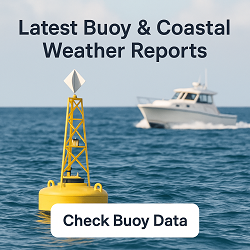Valley Lee, MD Weather Forecast and Current Conditions
Current Conditions From Nearby Local Station

Feels Like 31°F
at
Point Forecast at a Glance







7-Day Temperature Trend
Week Ahead Summary
High temperatures remain relatively stable through the week, ranging from 39°F to 47°F. Mostly dry conditions with only one day showing wintry mix chances.
Climate Context
This week's forecast shows temperatures running 6°F below the historical average for December. Normal highs for this period are around 49°F with lows around 32°F.
This Date in Weather History
1925 - A late season hurricane caused extensive damage across the Florida peninsula, then moved off the Georgia coast crossing Cape Hatteras as a tropical storm. The storm produced whole gales along the Middle Atlantic and Southern New England coast. Winds gusted to 60 mph at Block Island RI, and reached 64 mph at Atlantic City NJ.
Valley Lee, MD 7 Day Weather Forecast Details
Tuesday Dec 2

Night: Mostly clear, with a low around 30. Northwest wind around 15 mph, with gusts as high as 26 mph.
Wednesday Dec 3

Day: Sunny, with a high near 44. Northwest wind 3 to 8 mph.

Night: Mostly clear, with a low around 31. Calm wind becoming southwest around 5 mph after midnight.
Thursday Dec 4

Day: Increasing clouds, with a high near 47. Northwest wind 5 to 10 mph.

Night: Partly cloudy, with a low around 26. North wind 6 to 10 mph, with gusts as high as 18 mph.
Friday Dec 5

Day: Snow likely before 4pm, then rain and snow likely. Mostly cloudy, with a high near 39. Chance of precipitation is 60%. Little or no snow accumulation expected.

Night: Rain likely, possibly mixed with snow before 10pm, then a chance of rain. Cloudy, with a low around 31. Chance of precipitation is 60%.
Saturday Dec 6

Day: Mostly cloudy, with a high near 45.

Night: Mostly cloudy, with a low around 33.
Sunday Dec 7

Day: Partly sunny, with a high near 45.

Night: Mostly cloudy, with a low around 31.
Monday Dec 8

Day: Partly sunny, with a high near 41.

Night: Partly cloudy, with a low around 27.
Tuesday Dec 9

Day: Mostly sunny, with a high near 43.
About Valley Lee, MD
Content from Wikipedia, licensed under CC BY-SA 3.0.
How We Provide Better Local Weather
Current conditions: We use the nearest available station to your location - including professional MESONET/MADIS and local weather stations - often miles closer than regional airports.
Forecasts: National Weather Service point forecasts predict for your specific area, not broad regional zones, making them far more relevant to your location.



